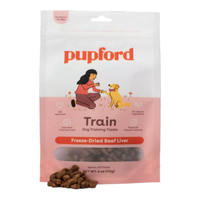This one thing can help reactive dogs calm down and it makes perfect sense!
We know that sniffing is good for dogs, but did you know it can help with reactivity?

Does your dog struggle with reactivity? If so, you’re not alone! Many people find that their dogs will react to stimuli including other dogs, people, and just things they see that spook them out.
So, if your dog is one who struggles with reactivity – when all you want to do is give them the best dog treats on a nice, relaxing walk – what can you do to help them?
Well, expert dog trainer Juliana DeWillems, owner and head trainer at JW Dog Training & Behavior, has got one crucial tip that can help us help our reactive dogs. You might be surprised at how simple it is, but when you think about it, it makes so much sense.
A post shared by JW Dog Training & Behavior Consulting (@jwdogtraining)
A photo posted by on
Do you know why you should let your dog sniff on a walk? “Sniffing is an excellent replacement behavior for reactive dogs,” begins DeWillems. “Don’t feel like your dog always has to look at the trigger. If they can sniff in the presence of the trigger, even better.”
She’s working with a dog, Maya, and is encouraging her to sniff when she’s in close proximity to potential triggers – even if it’s not actually the trigger that’s enticing her to sniff.
As she says in the caption: “If we don’t want barking and lunging, then we have to teach our dog what we DO want in the presence of a trigger. We want to teach our dogs all sorts of replacement behaviors, empowering them with many more desirable options when they come across a trigger.”
And sniffing is great for a few reasons. It helps bring a dog’s heart rate down and calms their nervous system, and if a dog has their head down sniffing the ground, they can’t be barking and lunging at the same time. Meanwhile, dogs already use sniffing to communicate – it’s a conflict-diffusing behavior that dogs often display when they want to avoid conflict. So, it’s ideal when dealing with reactivity in dogs in particular!
PetsRadar Newsletter
Get the best advice, tips and top tech for your beloved Pets
DeWillems mentions one client she’s worked with, who has a reactive dog. When they let their dog sniff as much as they wanted on walks, after previously keeping their pup moving on walks and not allowing them to sniff, their reactivity almost went away entirely.
If you’d like some more advice on working with your reactive dog, you might find this article useful: I trained as a dog behaviorist to better understand my reactive dog, and it totally transformed our bond.
Pupford Beef Liver Training Freeze-Dried Dog Treats
We gave these to our tester Isaiah for his dog Hayes to try. He reports back that they're his new favorite treat and are a suitable size for training. "He could and would eat the whole bag if allowed!"

Adam is a freelance journalist specialising in pets, music and culture, and mental health and wellbeing. He investigates and writes the large majority of news on PetsRadar, and collaborates with veterinary experts to produce informative pet care content.
Adam has a journalism degree from Southampton Solent University and a masters degree in Magazine Journalism from Cardiff University. He was previously senior editor at dog advice website DogTime.com, and has also written for The Independent, GoodToKnow and Healthline.
He owns two rescue cats, Bunny and Dougie, and has also previously had a rabbit, fish and Roborovski dwarf hamsters.

